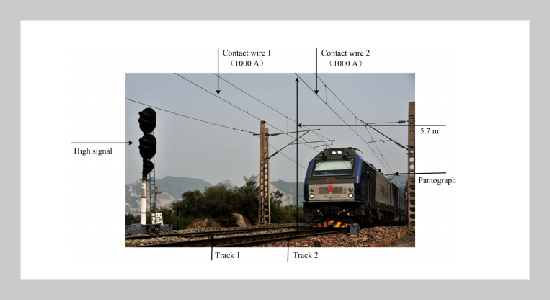Chang-qiong Yang1 and Mai Lu This email address is being protected from spambots. You need JavaScript enabled to view it.1 1Key Laboratory of Opto-Electronic Technology and Intelligent Control, Ministry of Education, Lanzhou Jiaotong University, Gansu Lanzhou 730070, China
Received:
September 18, 2020
Copyright The Author(s). This is an open access article distributed under the terms of the Creative Commons Attribution License (CC BY 4.0), which permits unrestricted use, distribution, and reproduction in any medium, provided the original author and source are cited.
Accepted:
February 21, 2021
Publication Date:
August 1, 2021
Download Citation:
||https://doi.org/10.6180/jase.202108_24(4).0008
The operator working on a high signal pole is exposed to high current electromagnetic field with frequents of 50 Hz, the contact wires’ current is varied from several hundred amperes to kilo amperes. However, the distribution of the induced electromagnetic field inside the high-signal operator induced by high-current contact wires is unknown. Electromagnetic simulation models of a high-signal operator and double-track railway contact wires were established using finite element simulation software to study the distribution of the electromagnetic field in the body of human operators when they working on high a signal. The electromagnetic field inside an operator’s body was calculated and analyzed. Results showed that when the two contact wires in the double-track railway had current at the same time, the maximum values of the electromagnetic fields in the high-signal operator were higher than those in the situation where only one contact wire had current. The maximum values of magnetic flux density and electric field intensity in the operator’s body were 66.7 µT and 330 mV/m, respectively. The electric field peak intensity in the head central nerves system was 0.9 mV/m, which is 6.67%, 41.375%, and 0.9% of the occupational exposure limits set by the International Commission on Non-Ionizing Radiation Protection (ICNIRP). The maximum values of the electromagnetic fields are lower than the occupational exposure limits provided by the ICNIRP. This research revealed that the high current of double-track railway contact wires is safe for electromagnetic exposure of the high-signal operator.ABSTRACT
Keywords:
High-signal; Contact wire; Electromagnetic exposure; Safety assessment.
REFERENCES
















